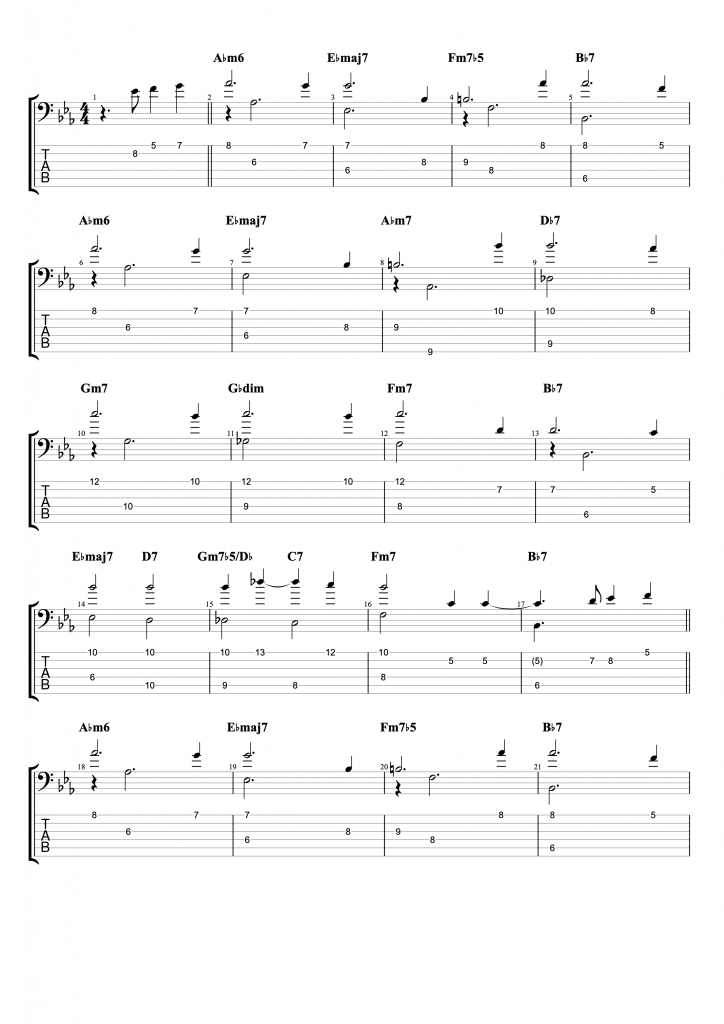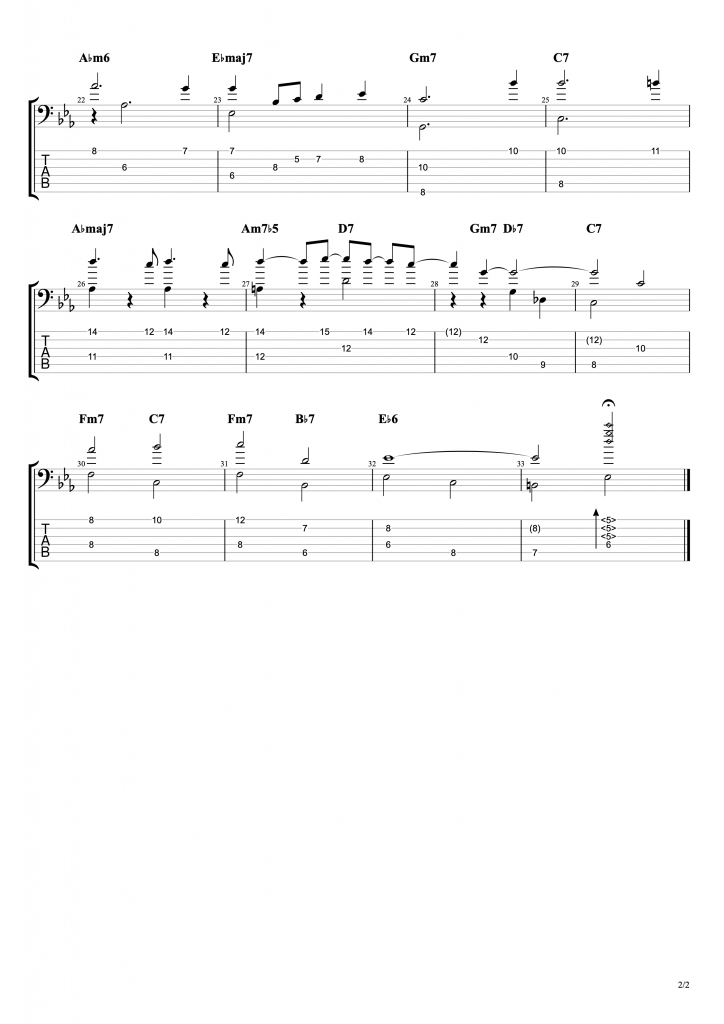Using the Bass Clef Real Book – Melody and Bass – Bass Practice Diary – 25th June 2019
Jazz musicians love to practice with Real Books. And most Real Books are now available in bass clef editions. I have several different editions of bass clef Real Books, such as this one. And in this video I’m demonstrating a system of practicing with the Bass Clef Real Book that combines playing melodies with bass notes. I’ve seen guitarists using this system but it’s not often used by bass players.
What are Real Books?
Real Books are big books filled with hundreds of jazz tunes and standards. The arrangements are mostly written very simply as just a single melody line with chord symbols written above. Some of the tunes have little bits of additional arrangement written in, such as a bass line or harmony. But mostly they just distill each tune down to the simplest structure of melody and chords. The concept was created so that jazz musicians could use a standardised melody and chord progression for each tune when playing them at jam sessions.
How can you use Real Books when you practice?
There are a few different ways that you can use Real Books when you practice. The obvious one is for learning the melody and chords of famous jazz tunes. And they’re also good for sight reading practice. There are a wide range of jazz tunes in most Real Books, everything from slow simple ones to fast complicated Bebop lines. So there should be something to practice, no matter what your reading level is. You could also practice improvising on the tunes with the addition of play along backing tracks.
But this week I’ve been trying something different with my Real Books. Instead of just reading the melodies alone, I’ve been trying to include the root notes of the chords, to make a simple solo arrangement of each tune. This is a concept that I’ve heard jazz guitarists like Julian Lage and Martin Taylor talk about.
The idea is that it helps you to learn the tunes by boiling them down to the fundamentals of melody and bass. So rather than thinking about chord changes (which jazz musicians do a lot) you are thinking more about how does the melody interact with the simple bass line root movement.
I’ve only recently started doing this, but here is a transcription of one of my early attempts. The tune is All of You by Cole Porter.



